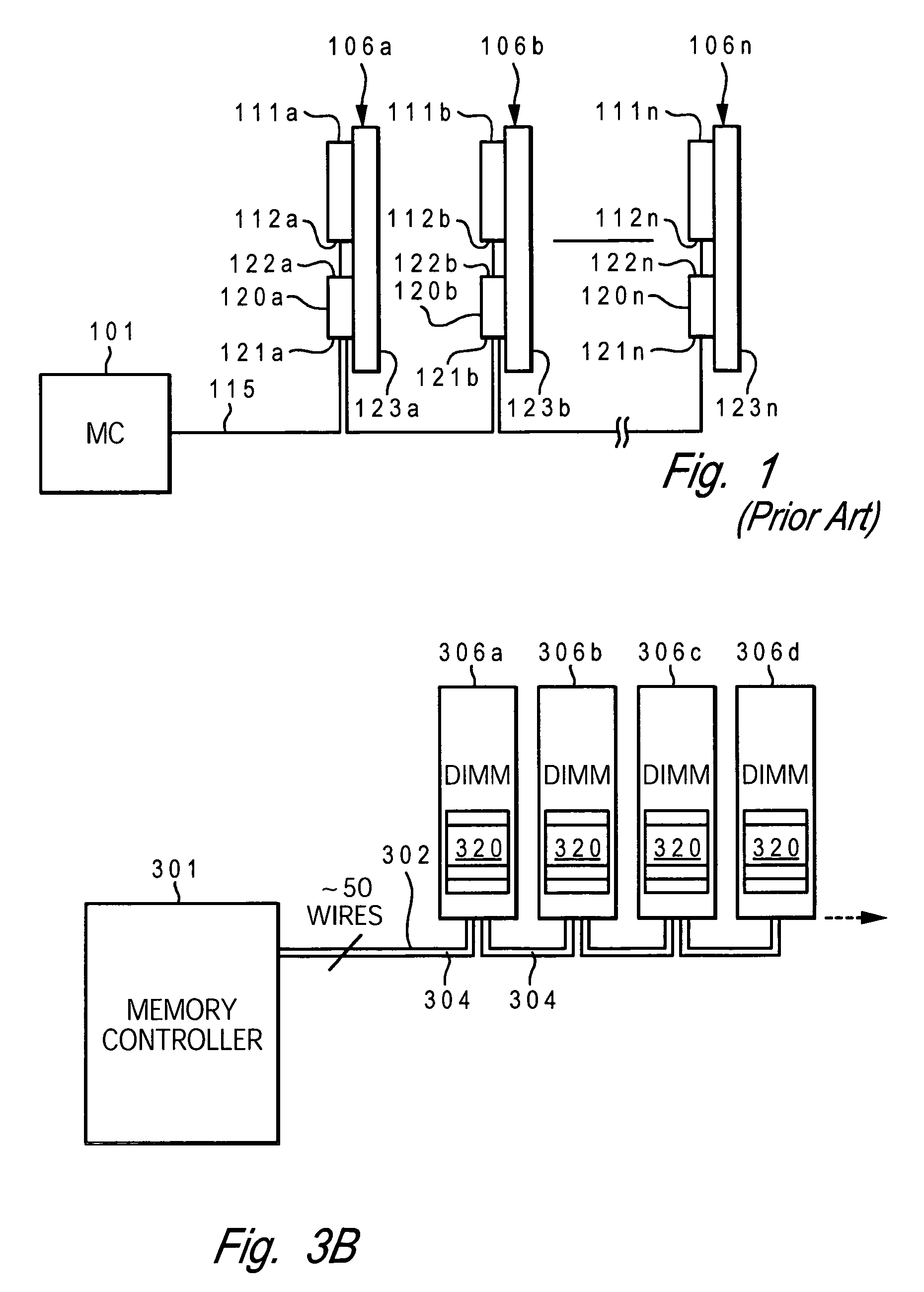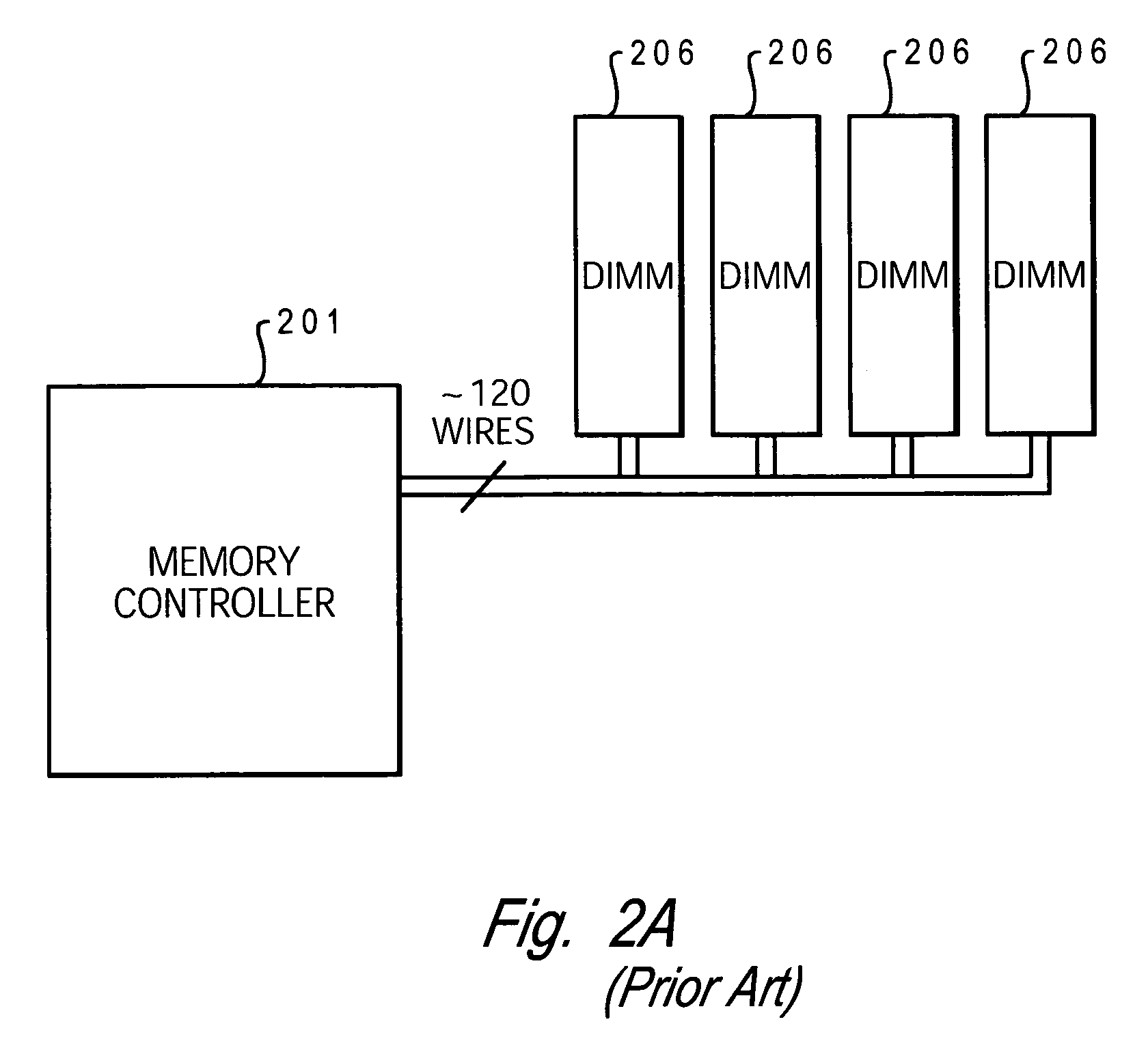Streaming reads for early processing in a cascaded memory subsystem with buffered memory devices
a memory subsystem and buffer technology, applied in the field of computer devices, can solve the problems of limiting the efficiency of the memory subsystem, adding unnecessary delays in the data retrieval process, and increasing the latency associated with the return of read data via the series of daisy chained memory modules, and achieve the effect of efficient completion of multiple read operations
- Summary
- Abstract
- Description
- Claims
- Application Information
AI Technical Summary
Benefits of technology
Problems solved by technology
Method used
Image
Examples
Embodiment Construction
[0029]The present invention provides a method and system for efficiently completing multiple read operations within a memory subsystem having a memory controller coupled to buffered memory modules in a daisy chain topology. A variable read latency is provided with each read command issued to allow the data bus on each memory module that is installed in the memory subsystem to run independently in the memory subsystem. Additionally, inefficiencies of the memory device architecture are hidden by allowing data buses on multiple memory modules attached to the same data channel to run in parallel rather than in series and by issuing reads earlier than required to enable the memory devices to return from a busy state earlier.
[0030]For simplicity in describing the invention, the memory modules are assumed to be dual inline memory modules (DIMMs) and the memory devices are assumed to be Dynamic Random Access Memory (DRAMs). These modules contain multiple DRAMs arranged in groups to form one...
PUM
 Login to View More
Login to View More Abstract
Description
Claims
Application Information
 Login to View More
Login to View More - R&D
- Intellectual Property
- Life Sciences
- Materials
- Tech Scout
- Unparalleled Data Quality
- Higher Quality Content
- 60% Fewer Hallucinations
Browse by: Latest US Patents, China's latest patents, Technical Efficacy Thesaurus, Application Domain, Technology Topic, Popular Technical Reports.
© 2025 PatSnap. All rights reserved.Legal|Privacy policy|Modern Slavery Act Transparency Statement|Sitemap|About US| Contact US: help@patsnap.com



